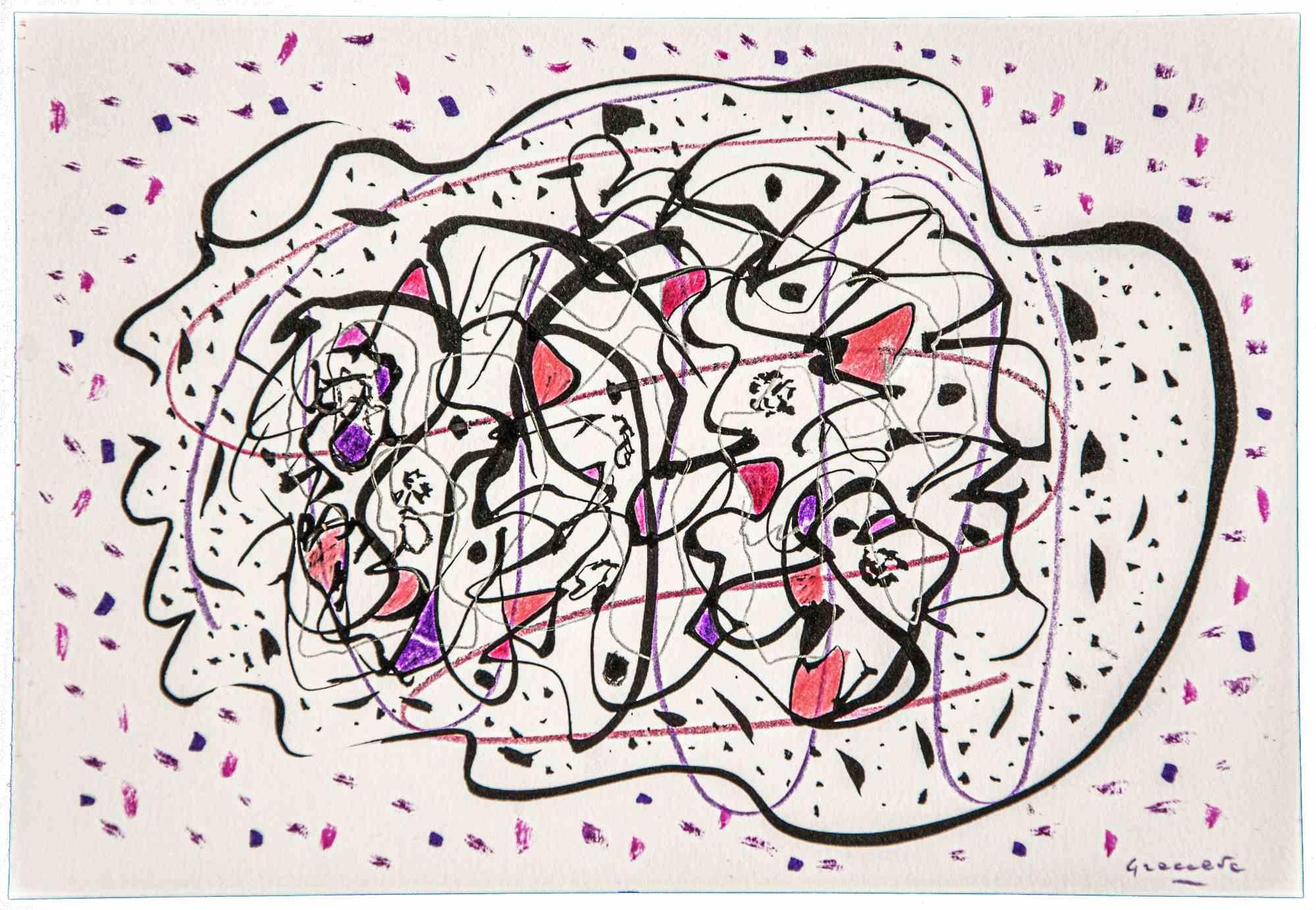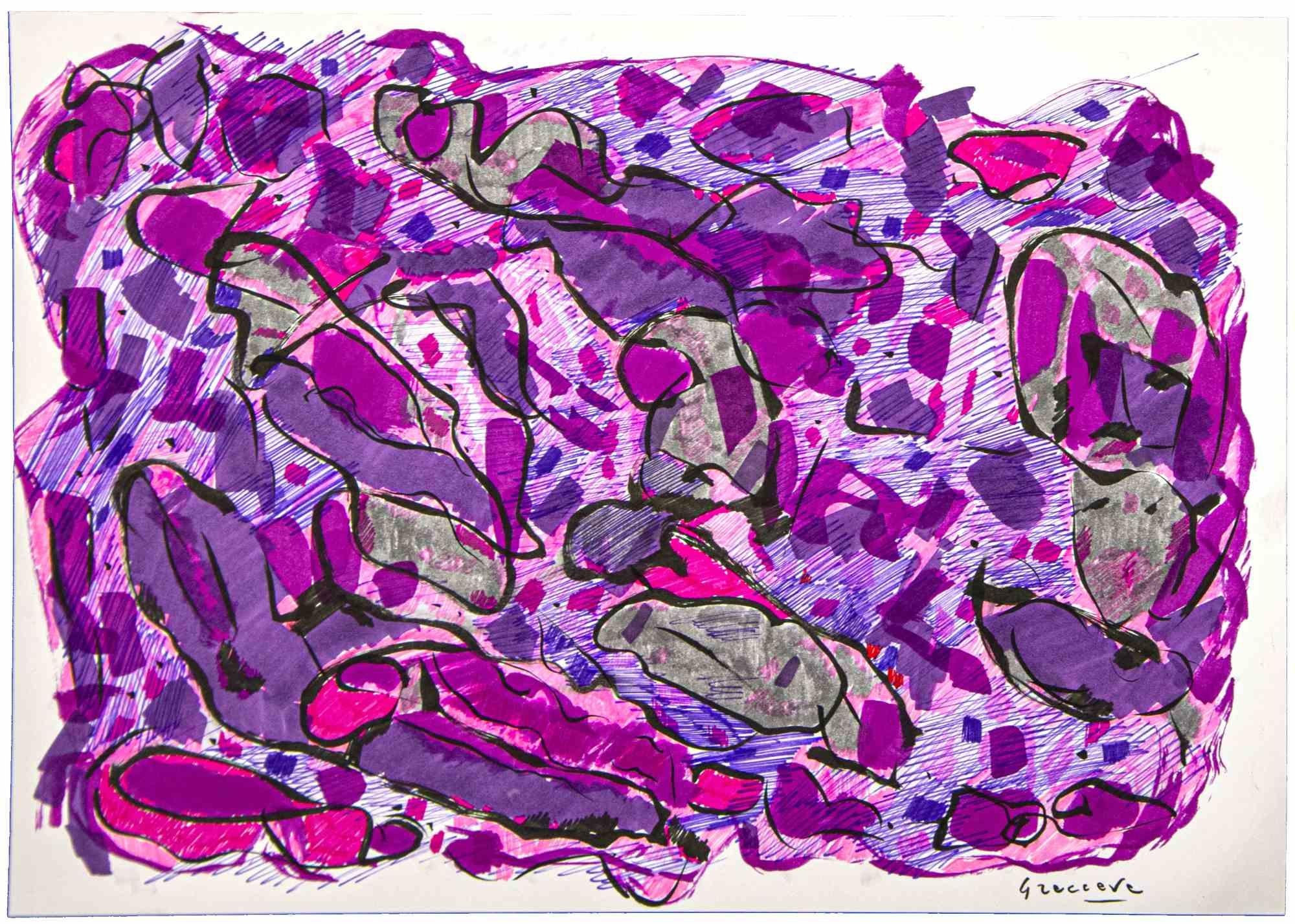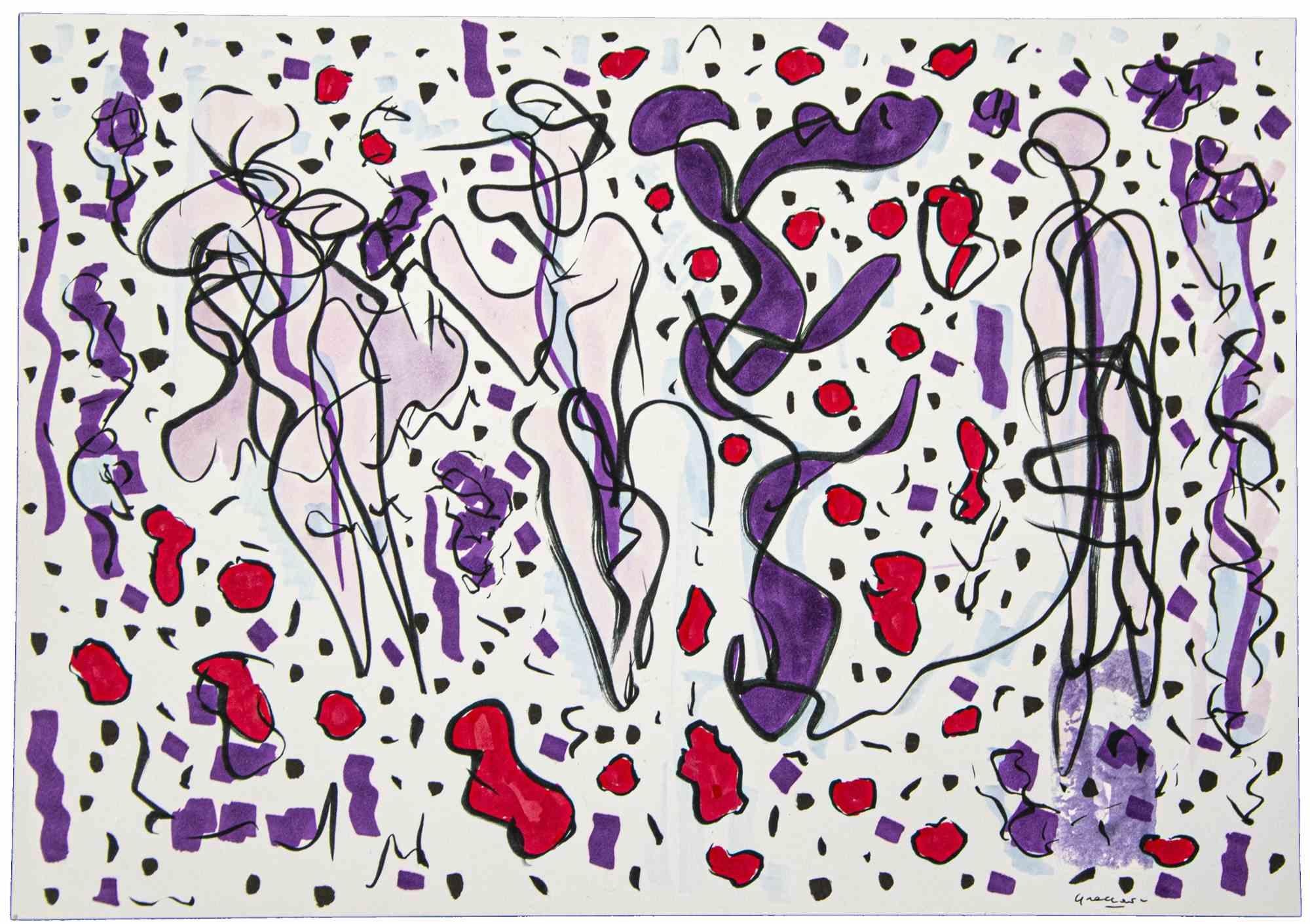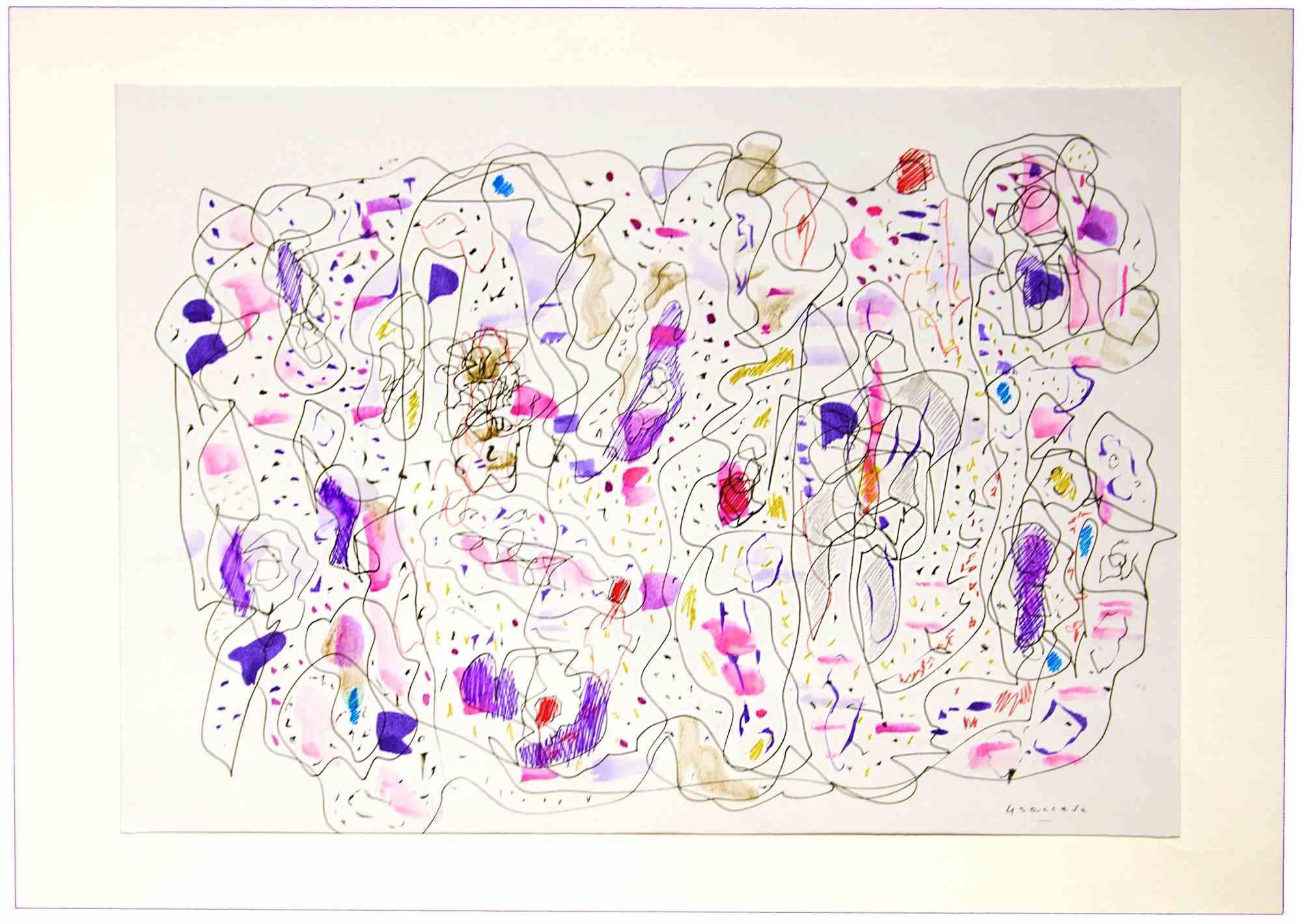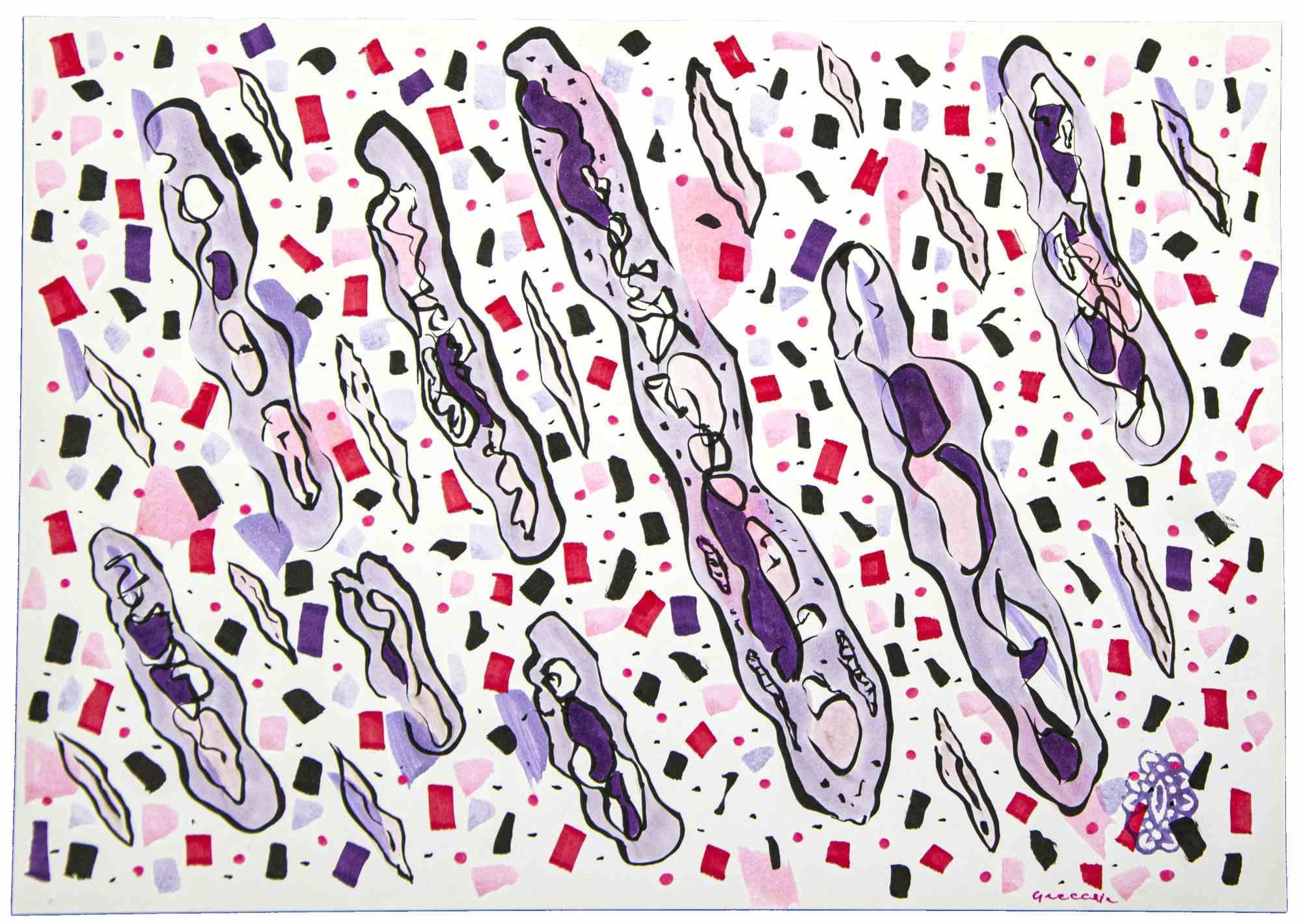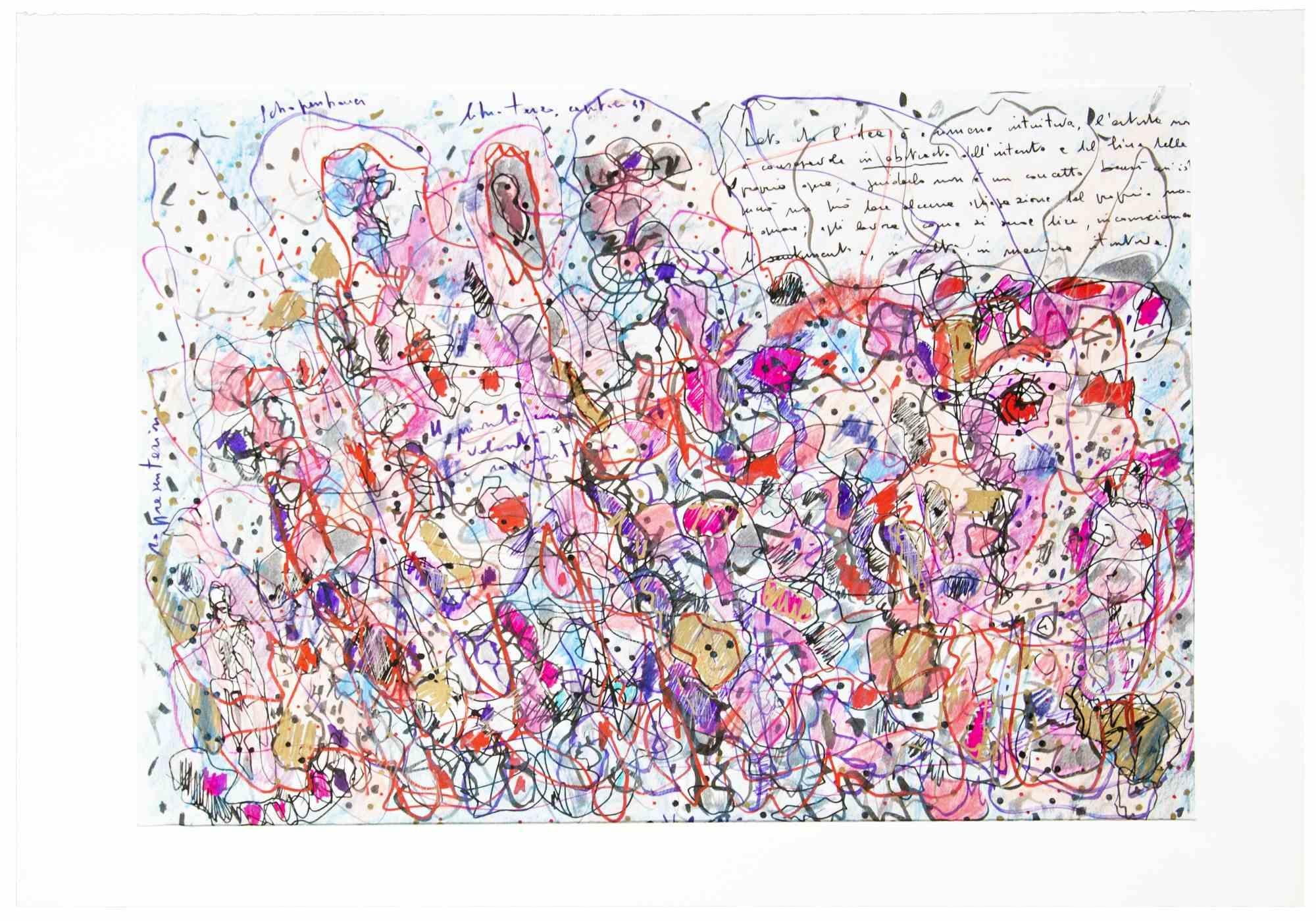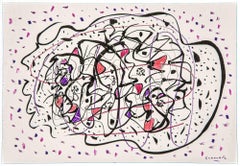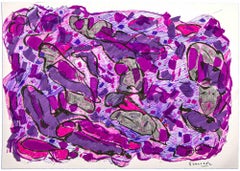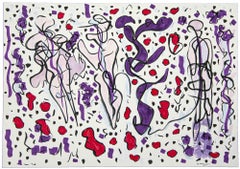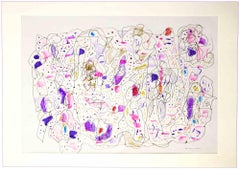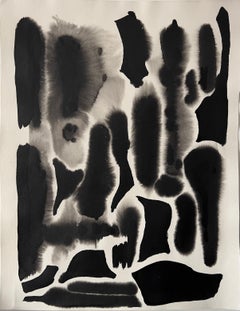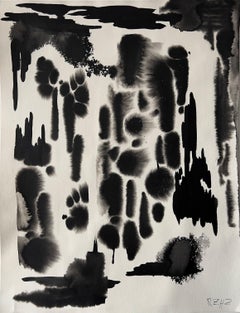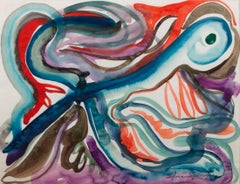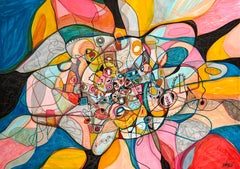Items Similar to Composition - China ink and watercolor by Maurizio Gracceva - 2010
Want more images or videos?
Request additional images or videos from the seller
1 of 2
Maurizio GraccevaComposition - China ink and watercolor by Maurizio Gracceva - 20102010
2010
$549.06
£409.68
€460
CA$765.63
A$839.02
CHF 438.16
MX$10,082.79
NOK 5,477.72
SEK 5,166.36
DKK 3,502.05
About the Item
Composition is an original artwork realized by Maurizio Gracceva (Roma, 1955) in 2010.
Good condition.
Hand-signed.
China ink and watercolor.
Author of numerous philosophical and literary essays, since a very young age Maurizio Gracceva has loved painting, but for some years he has undertaken a passionate pictorial experimentation that he perceives as an irrepressible expressive need. Maurizio Gracceva's art combines a syntax of informal origin with a refined expressionist chromatism.
- Creator:Maurizio Gracceva
- Creation Year:2010
- Dimensions:Height: 8.27 in (21 cm)Width: 11.82 in (30 cm)Depth: 0.04 in (1 mm)
- Medium:
- Movement & Style:
- Period:
- Framing:Framing Options Available
- Condition:Insurance may be requested by customers as additional service, contact us for more information.
- Gallery Location:Roma, IT
- Reference Number:Seller: T-1208011stDibs: LU65038362062
About the Seller
4.9
Platinum Seller
Premium sellers with a 4.7+ rating and 24-hour response times
1stDibs seller since 2017
7,719 sales on 1stDibs
Typical response time: 2 hours
- ShippingRetrieving quote...Shipping from: Roma, Italy
- Return Policy
Authenticity Guarantee
In the unlikely event there’s an issue with an item’s authenticity, contact us within 1 year for a full refund. DetailsMoney-Back Guarantee
If your item is not as described, is damaged in transit, or does not arrive, contact us within 7 days for a full refund. Details24-Hour Cancellation
You have a 24-hour grace period in which to reconsider your purchase, with no questions asked.Vetted Professional Sellers
Our world-class sellers must adhere to strict standards for service and quality, maintaining the integrity of our listings.Price-Match Guarantee
If you find that a seller listed the same item for a lower price elsewhere, we’ll match it.Trusted Global Delivery
Our best-in-class carrier network provides specialized shipping options worldwide, including custom delivery.More From This Seller
View AllAbstract Composition - China ink and Watercolor by M. Gracceva - 2010
Located in Roma, IT
Composition is an original artwork realized by Maurizio Gracceva (Roma, 1955) in 2010.
Good condition.
Hand-signed.
China ink and watercolor.
Author of numerous philosophical and...
Category
2010s Abstract Abstract Drawings and Watercolors
Materials
Ink, Watercolor
Abstract Composition - China ink and watercolor by M. Gracceva - 2010
Located in Roma, IT
Composition is an original artwork realized by Maurizio Gracceva (Roma, 1955) in 2010.
China ink and watercolor.
Hand-signed.
Excellent condition.
Author of numerous philosophica...
Category
2010s Abstract Abstract Drawings and Watercolors
Materials
Ink, Watercolor
Abstract Composition - Drawing by Maurizio Gracceva - 2010
Located in Roma, IT
Composition is an original artwork realized by Maurizio Gracceva (Roma, 1955) in 2010.
Good condition.
Hand-signed.
China ink and watercolor.
Author of numerous philosophical and...
Category
2010s Abstract Abstract Drawings and Watercolors
Materials
Ink
Composition- Ink and Watercolor by Maurizio Gracceva - 2010
Located in Roma, IT
Composition is an original artwork realized by Maurizio Gracceva (Roma, 1955) in 2010.
China ink and watercolor.
Hand-signed.
Passepartout, good condition.
Author of numerous phi...
Category
2010s Abstract Abstract Drawings and Watercolors
Materials
Ink, Watercolor
Composition - Drawing by Maurizio Gracceva - 2010
Located in Roma, IT
Composition is an original artwork realized by Maurizio Gracceva (Roma, 1955) in 2010.
Good condition.
Hand-signed.
China ink and watercolor.
Aut...
Category
2010s Contemporary Abstract Drawings and Watercolors
Materials
India Ink, Watercolor
Composition - Ink and Watercolor by Maurizio Gracceva - 2010
Located in Roma, IT
Composition is an original artwork realized by Maurizio Gracceva (Roma, 1955) in 2010.
China ink and watercolor.
Passepartout, good condition.
Hand-signed.
Author of numerous phi...
Category
2010s Contemporary Abstract Drawings and Watercolors
Materials
Ink, Watercolor
You May Also Like
No title 2, Abstract Watercolor
Located in Miami Beach, FL
In this series, water and pigments dance in a liquid choreography, intertwining and painting their own destinies. Each brushstroke traces ephemeral paths that are born, intersect and...
Category
2010s Abstract Abstract Drawings and Watercolors
Materials
Paper, Ink
No title 3, Abstract Watercolor
Located in Miami Beach, FL
In this series, water and pigments dance in a liquid choreography, intertwining and painting their own destinies. Each brushstroke traces ephemeral paths that are born, intersect and...
Category
2010s Abstract Abstract Drawings and Watercolors
Materials
Paper, Ink
"Biomorphic Abstraction II" original watercolor painting by Sylvia Spicuzza
By Sylvia Spicuzza
Located in Milwaukee, WI
In the 1960s, Sylvia Spicuzza made several watercolor abstractions with biomorphic qualities like the one presented here. While being a playful abstraction, the watercolor also seeps...
Category
1960s Abstract Abstract Drawings and Watercolors
Materials
Watercolor
M-0023, Drawing, Pen & Ink on Paper
By Yehan Wang
Located in Yardley, PA
this is my drawing painting, watercolor marker pen and mixed media on paper. 30x42cm 2018 NEW :: Drawing :: Abstract :: This piece comes with an official certificate of authenticity ...
Category
2010s Abstract Abstract Drawings and Watercolors
Materials
Pen
Untitled
Located in Barcelona, BARCELONA
the painting is being offered with a work and authenticity certificate
Category
1980s Abstract Drawings and Watercolors
Materials
Paper, Mixed Media
Untitled #1 - Emmanuelle Messika, 21st Century, Abstract drawing
By Emmanuelle Messika
Located in Paris, FR
Coloured inks and pastel on paper
Signed
Gestural abstraction
Outsider art
Artist’s statement :
"Painting, for me, is an expressive endeavor in which one depicts the evolution of the various facets of the artistic self. There is, on each canvas, a tension where violence and stillness naturally coexist. By playing with different materials, I seek to establish a sort of unexpected dialogue between these states, and aspire to express this tension through profusion of color.
The canvas is the stage that allows me to unite narration with the action of painting the fantastic—even the outrageous---and the everyday. I develop scenarios borrowed from the imagination, which join fantasy, even fables, with the everyday. Pulling threads from each domain, I bring together the mythical and the quotidian, so that the worlds of reality and fantasy merge.
I rely on “creatures,” improbable little characters that could exist in some other realm or dimension. They materialize, issuing forth from the surprising, unbelievable and wondrous world of childhood. Human or animal, both find themselves entangled in inextricable and melancholic situations. These inextricable situations create distance; the humor comes through this breach. It is the absurdity of their predicaments that manifests the humor in the work.
In each of my paintings, the sentiments are heightened by an intentional, provocative tone that transforms the work. An Otherness is attributed to objects; objects become personified, and by their very presence, they become witnesses or guinea pigs torn between and bound to their dilemma.
The titles of my paintings, whether invented or quotations taken out of context, come from literature, theater, or song lyrics.
Accident and chance are often major actors in my work.”
Emmanuelle Messika
BIOGRAPHY :
Emmanuelle Messika was born in France in 1979.
She works and lives in Paris.
STUDIES
1999-2005
École Nationale Supérieure des Beaux-Arts de Paris
Diplômée en Juin 2005
2004
Échange universitaire à Hunter College, New York NY, USA
1993-1999
Ateliers des Beaux-Arts de la Ville de Paris, Montparnasse
PERSONAL EXHIBITIONS :
2019
Claire Corcia Gallery, Paris
2018
Claire Corcia Gallery, Paris
Outsider Art Fair, Paris
2012
Art Contemporain Sèvres, "La Chartreuse", Sèvres
2011
Espace Seven, Galerie De Vos, Paris
2010
Les Trois Baudets, Paris
Galerie Mariska Hammoudi, Paris
Galerie Crous -Beaux-Arts, Paris
L'Apparemment Café, Paris
2009
Espace Rachi, Paris
2008
Galerie Console, Paris
2007
Exposition Place du Québec, Mairie du sixième, Paris
2006
Galerie Eonnet-Dupuis, Paris
2005
Galerie Crous Beaux Arts, Paris
2004
The Mark Bar, "Bring your own flashlight", Brooklin, New York
2003
Le Glaz’art, Paris
2002
9 rue Dauphine, Paris
2001
Galerie Gauche, École des Beaux-Arts, Paris
2000
La grosse caisse, Paris
La liberté, Paris
GROUP SHOWS
2011
Chic Art Fair, Galerie Mariska Hammoudi
Galerie De Vos, Espace Seven
2010
Galerie Mariska Hammoudi, Paris
Chic Dessin, avec Cherry Gallery...
Category
2010s Abstract Expressionist Abstract Drawings and Watercolors
Materials
Paper, Pastel, Ink
More Ways To Browse
Vintage Gelatin Prints
Abstract Geometric Art
Hand Signed By Artist
Black And White Photograph
Paris Oil Paintings On Canvas
Contemporary Oil Paintings Of New York
Collection World
American Oil Paintings
French Prints
Architectural Photography
Acrylic Original Paintings
Contemporary Vintage Photography
Royal Academy
Black White Photography Framed Signed
Blue And White Abstract Art
Limited Edition Photography
Green Painting
Vintage Dancer
